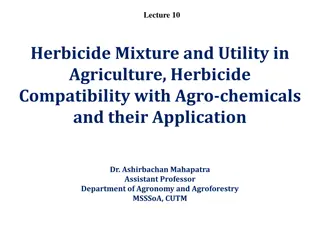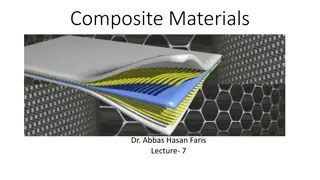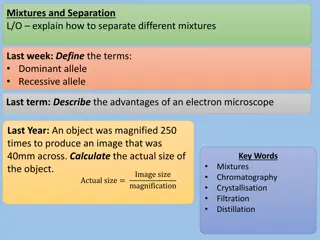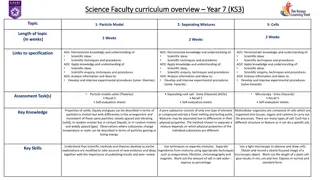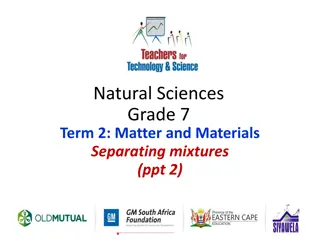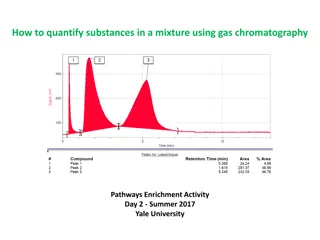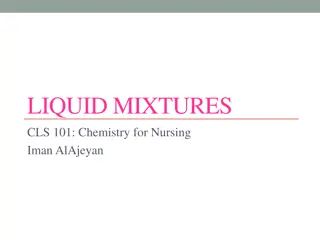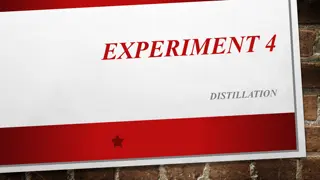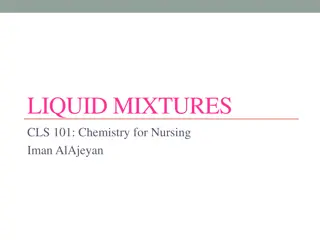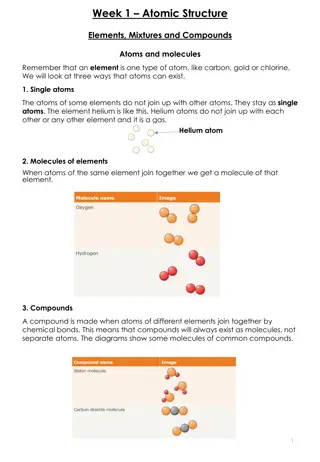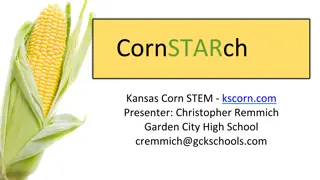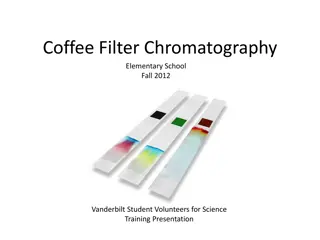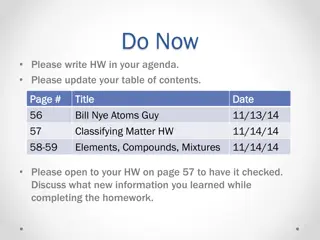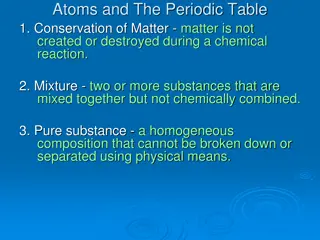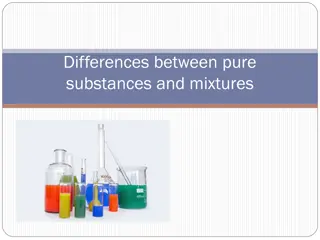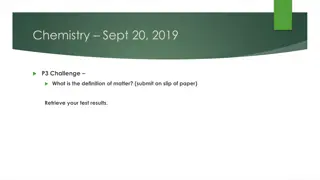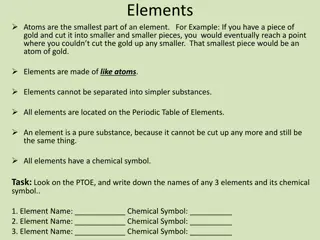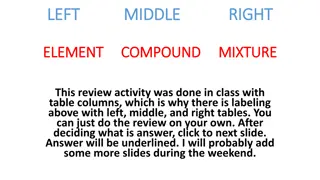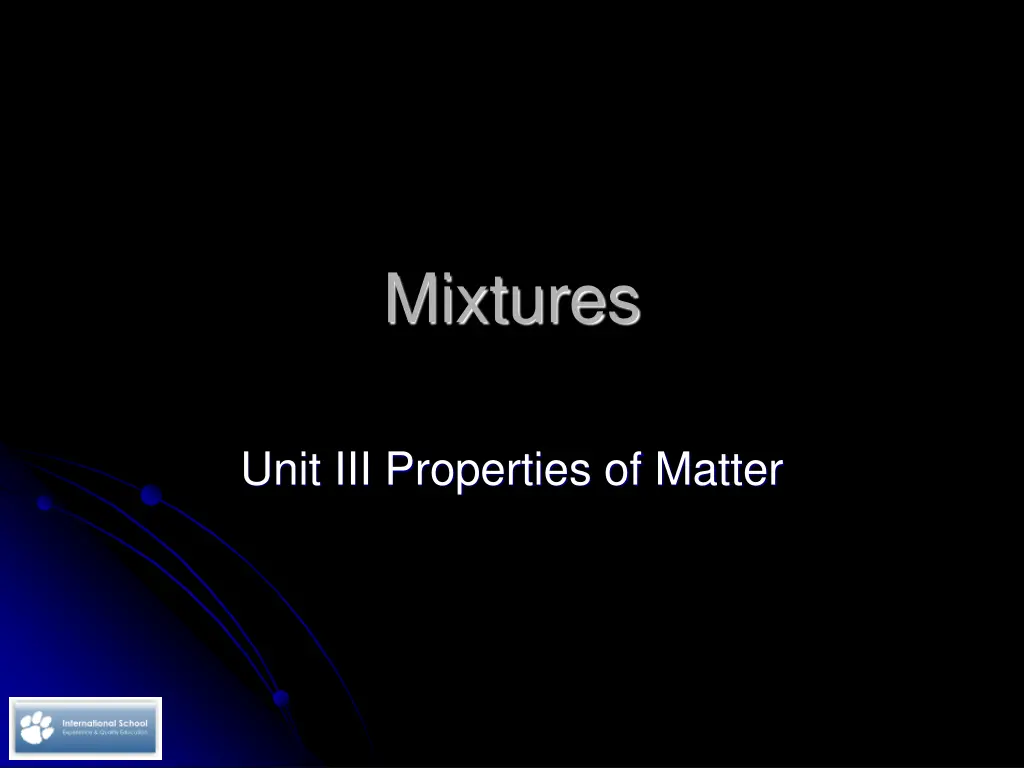
Understanding Mixtures: Properties and Examples
Explore the concept of mixtures in chemistry, including definitions, types (homogenous and heterogenous), examples, and solutions. Learn how mixtures can be separated and understand the concept of phases within mixtures. Discover the special name scientists give to homogenous mixtures and delve into common types of solutions.
Download Presentation

Please find below an Image/Link to download the presentation.
The content on the website is provided AS IS for your information and personal use only. It may not be sold, licensed, or shared on other websites without obtaining consent from the author. If you encounter any issues during the download, it is possible that the publisher has removed the file from their server.
You are allowed to download the files provided on this website for personal or commercial use, subject to the condition that they are used lawfully. All files are the property of their respective owners.
The content on the website is provided AS IS for your information and personal use only. It may not be sold, licensed, or shared on other websites without obtaining consent from the author.
E N D
Presentation Transcript
Mixtures Unit III Properties of Matter
BELLWORK What is a mixture? How can it be separated? Can you provide another example?.
Mixtures A mixture is a physical blend of two or more substances. Their composition varies (Air). There are two types of mixtures: homogenous and heterogenous
Mixtures Heterogenous mixtures Is the type of mixture that is not uniform in composition. If you were to sample one portion of such a mixture, it s composition would be different from that of another portion.
Mixtures Homogenous mixture Is the type of mixture that has a completely uniform composition throughout itself. It s components are evenly distributed throughout the sample.
Homogenous or Heterogenous? 1. Air 2. Salt water 3. Tea 4. Brass 5. Vinegar 6. Hydrogen peroxide 7. Steel 1. Salad dressing 2. Apple 3. Sand 4. Paint 5. Granite 6. Laundry detergent 7. Cereal
Solutions Is the special name that scientists give to homogenous mixtures. Solutions may be gases, liquids or solids. An example: solution of sugar in water.
Solutions Some common types of solutions System Examples CO2 and O in N (air) Liquid-gas Gas-liquid Liquid-liquid Solid-liquid Solid-solid Gas-gas Water vapor in air CO2in H2O (Soda water) Acetic acid in H2O (vinegar) NaCl in H2O (brine) Cu in Ag (Sterling silver)
Phases Any part of a system with uniform composition and properties is called a phase. On a homogenous mixture you have one phase only. On a heterogenous mixture you have two or more phases .
Separating Mixtures Suppose you had a mixture of iron nails, salt and water How would you separate this mixture completely? Based on which physical properties would you base your method on?
Separating Mixtures How would you separate the components in tap water? Distillation A liquid is boiled to produce vapor that is then condensed again to a liquid
Mixtures Sample problem How can a mixture of iron fillings and aluminum fillings be separated? 1.-Analyze: Plan a problem solving strategy List the properties of iron and aluminum and look for something that would be useful in separating the mixture
Mixtures 2.- Solve: Apply the problem-solving strategy. Iron: Metal Grayish Not soluble in water Attracted to a magnet Aluminum: Metal Grayish Not soluble in water Not attracted to magnets Make use of a property that differentiates the metals; use a magnet to attract the iron fillings.
Mixtures 3.-Evaluate: Does the result make sense? Because the magnet attracts iron but not aluminum filings, the iron would be removed while the aluminum would be left behind.
Practice Problems What physical properties could be used to separate iron filings from salt? Which of the following are homogenous? heterogenous? 1.-Spaghetti sauce 4.-Cough syrup 2.-Glass 5.-Mixture of nitrogen gas 3.-Muddy Water and helium gas
This powerpoint was kindly donated to www.worldofteaching.com http://www.worldofteaching.com Is home to well over a thousand powerpoints submitted by teachers. This a free site. Please visit and I hope it will help in your teaching

